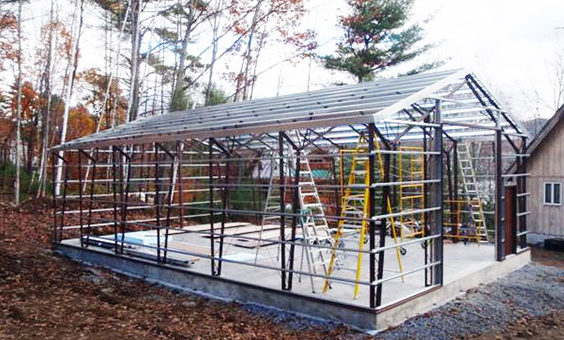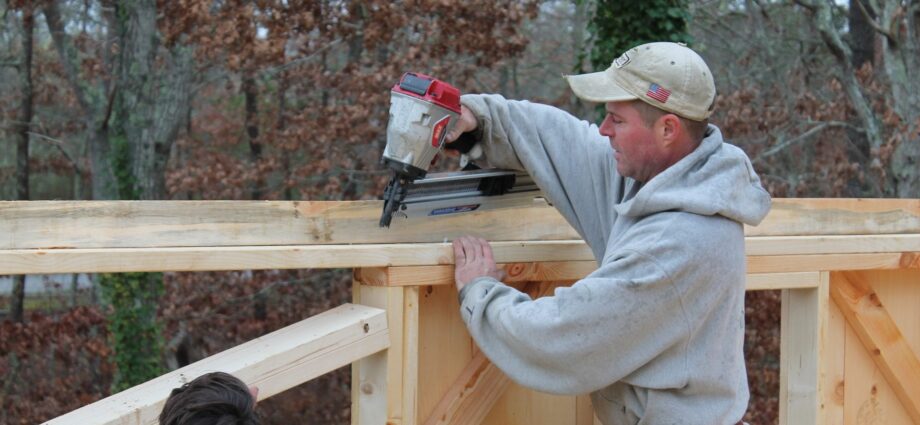PHOTO: Pine Habor Wood Products
Brief about the benefit and utility of personal sheds
Personal sheds offer numerous benefits. They provide extra storage space for gardening tools, sports equipment or unused furniture, thereby decluttering your home and garage. They can also serve as a private workstation for hobbies or DIY projects. Energy-efficient designs or solar panels offer utility savings. Additionally, the shed’s aesthetic can enhance the overall property value.
Explanation of DIY shed kits concept
The DIY shed kits concept involves a do-it-yourself approach to building storage sheds. These kits come with pre-cut materials, instructions, and sometimes tools, letting you assemble your shed from scratch. This concept provides flexibility in design and cost-effectiveness, appealing to homeowners who prefer manual building while enhancing their carpentry skills.
Choosing the right DIY Shed Kit
Choosing the right DIY Shed Kit significantly contributes to accomplishing your storage solutions effectively. Essential factors such as size, material, design, cost, and assembling complexity should be considered. An ideal DIY shed kits aligns with the available space, complements your home design, and is durable, affordable and easy to assemble. Consider user reviews and ratings for informed choices.

Brief on different types of shed kits
Shed kits come in various types, offering a range of options for organizing outdoor space. The most common types include wooden, plastic, metal and fabric shed kits. Wooden kits are traditional and durable. Plastic kits, usually made from resin or vinyl, are resistant to rot and rust. Metal kits are sturdy while fabric kits are portable and quick to assemble.
Tips for choosing the right size and style based on individual need
Choosing the right size and style is essential for comfort and aesthetics. Carefully consider your individual needs and preferences. Measure accurately for size to ensure a good fit. Factor in your lifestyle and personal style when choosing a design. Seek professional advice if necessary. Pay attention to details such as material and colour. Remember, a great fit boosts confidence.

Preparing for Shed Installation
Selection of the shed location
Choosing the right location for a shed is crucial. Consider factors like accessibility for equipment, adequate sunlight, and distance from the main building. It needs to blend with the landscape and not interfere with property lines, septic tanks, or overhead wires. Spot with well-drained soil is preferred to prevent moisture damage. Always confirm local zoning regulations.
Preparation of the shed base and site
Before starting any shed project, preparing the base and site is essential for a stable and level foundation. This involves clearing any vegetation, levelling the ground, and laying a firm base material like concrete, paving slabs, or wooden decking. Providing a strong and level base prevents future issues such as sagging or shifts in the shed structure.
Assembling DIY shed kits
Assembling DIY shed kits is a manageable task for those interested in home improvement. The kits typically come with all required elements inclusive of pre-cut materials, fasteners, doors, and detailed instructions. It’s a time-consuming process that demands accuracy and patience but ultimately provides a storage solution that can be personalized to fit any outdoor space.
Tools required for assembly
Assembly requires various tools depending on the complexity of the task. Basic ones include screwdrivers (Philips and flathead), wrenches, pliers, and hammers. Allen wrenches may also be needed for furniture assembly. Additionally, a powered drill and bits can speed up the process, while a level ensures accuracy. Tape measures help with size and alignment.
Steps of assembling a shed kit
Assembling a shed kit requires several steps. First, prepare the location and construct a level foundation. Second, unbox and organize all parts according to the instruction manual. Next, assemble the floor frame and fix it onto the foundation. Then, build the wall frame and roof structure. Lastly, install the door, window, and any interior fittings.
Customizing Your Shed
Guide on how to personalize the shed
Personalizing a shed can give it a unique and inviting feel. Start by painting it with a colour scheme that suits your personality and garden. Adding potted plants outside or installing shelving inside for tools can enhance its functionality. Lastly, incorporate elements of your hobbies – maybe a reading spot, crafting table, or gardening station, to truly make it your own.
Ideas on painting and decorating the shed
Revitalize your shed with a fresh coat of paint, preferably in light hues to reflect heat. Consider weather-resistant paint for durability. For decoration, install window boxes with vibrant flowers. Shelves on the inside can store pots and gardening tools attractively. Installing a pathway, utilizing stepping stones or gravel, leading to the shed can enhance its aesthetic appeal.
Additional Shed Enhancements
How to include electricity and lighting in your shed
Including electricity and lighting in your shed can be a DIY task if you’re handy, but it’s recommended to hire a professional electrician. First, plan where the outlets and overhead lighting go. Next, run underground wiring from your main panel to the shed. Install the fixtures, then connect and test the system. Always follow local codes and regulations.
Suggestions for adding insulation and ventilation
Adding insulation and ventilation optimally to a space enhances energy efficiency, cost-saving, and comfort. Use high R-value insulation in your attic, walls and floors to trap heat effectively. Meanwhile, an HVAC system, exhaust fans or ridge vents should be installed for proper ventilation. Regular maintenance is needed to ensure their optimal functionality. Always consult a professional for proper installation.
Proper Maintenance of the Shed
Overview of shed maintenance tips
Shed maintenance is crucial to maximize longevity and ensure safety. Regular checks for leaks, rust, and structural damage help prevent more serious issues. Ensure doors and windows are tightly sealed to keep rain and pests out. Regular maintenance includes fresh paint, lubricating hinges, and cleaning gutters. Treating timber against rot and mould is also advantageous.
Tips on periodic checking and repairing for long-lasting use
Regular maintenance extends the lifespan of your equipment. It’s crucial to perform periodic checks to identify any potential issues early on. Keeping a strict maintenance schedule can help, including cleaning, oiling, or changing certain parts as needed. Engage professionals for major repairs to ensure proper handling. Remember, constant care results in long-lasting use.














